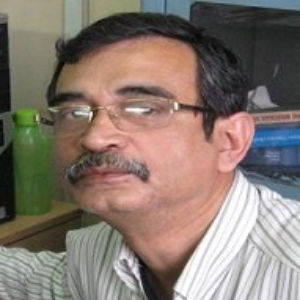Title : Studies on multifunctional nanostructured materials
Abstract:
Multifunctional materials are of today’s quest. Miniaturization, i.e. development of these materials in the form of nanomaterials is of primary need considering their application in devices. Moreover, if these are obtained in nanostructured form, they can bring wonders.
Recently, a we have adopted for developing multiferroic BiFeO3 (BFO) with simultaneous antiferromagnetic, ferroelectric & ferroelastic behaviour in form of nanostructures like nanorods, nanowire etc. by employing Anodised Alumina (AAO) template with various pore sizes from 20nm with solution route followed by controlled vacuum filtration and sintering. Diameters of nanorods are in the range of 20-100 nm as observed by FESEM. Capacitance assayed by cyclic voltammetry (CV) and charge discharge processes reveals a very high value of specific capacitance of 450F/gm. Capacitance has been estimated by extrapolating the charge collected at the electrode to that at scanning rate of infinity which is relevant for the charge collected at the nanorods protruding out of the template. Charging and discharging times are quite constant over a large number of cycles. This large value of specific capacitance can be attributed to the nanostructure form of BFO nanorod. The high value of specific capacitance of BFO nanorods brings forth its use as electrode in storage energy devices. Also, a high value of polarization as well as a significant magnetic susceptibility are observed in multiferroic Bismuth Ferrite (BFO) in the form of nanorods protruding out. The high values of polarization and magnetic susceptibility are attributed to the structured form of BFO nanorods giving rise to the directionality. There is no leakage current in P-E loop examined at various fields and frequencies. Magnetocapacitance measurements reflect a significant enhancement in magnetoelectric coupling also.
We have also developed a variety of conducting polymer (like PANI, PEDOT etc.) and graphene based nanocomposites with a large value of specific capacitance for use as energy storage device. Low energy ion source available at VECC is a useful tool to develop various nanostructures like nanoripples, nanopillars etc. Some novel nanopillars of Ni have been developed using low energy ion beam irradiation.


